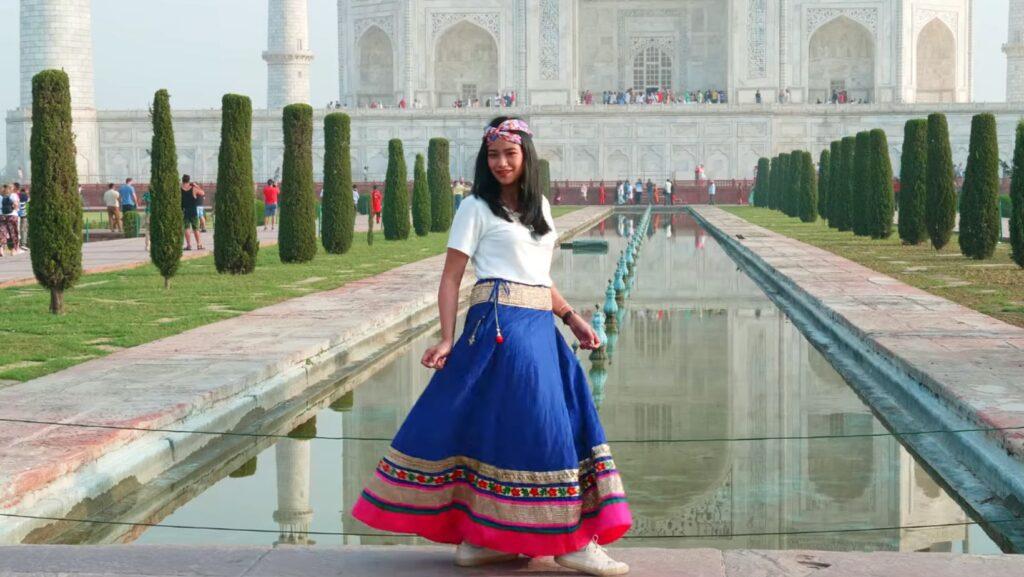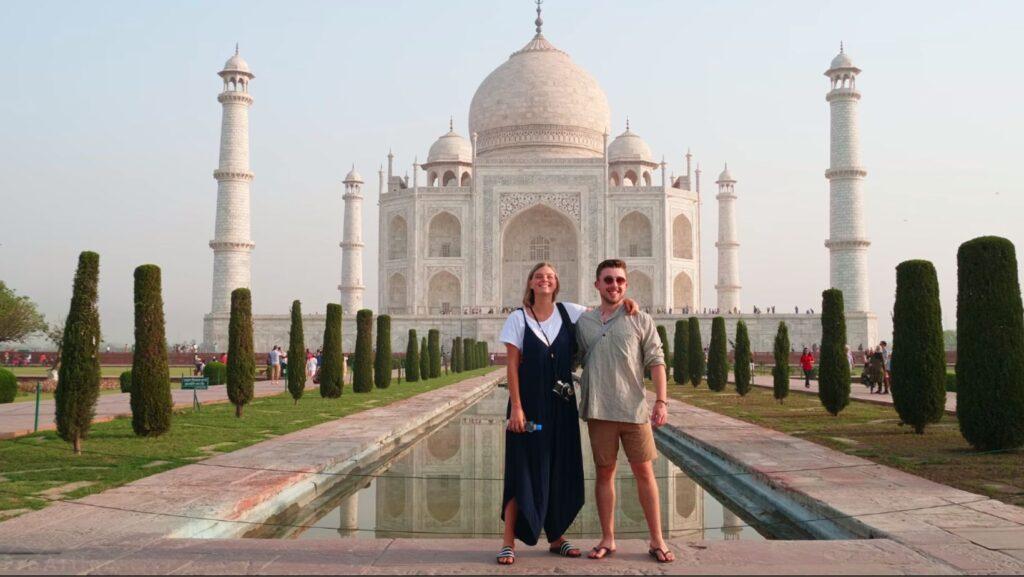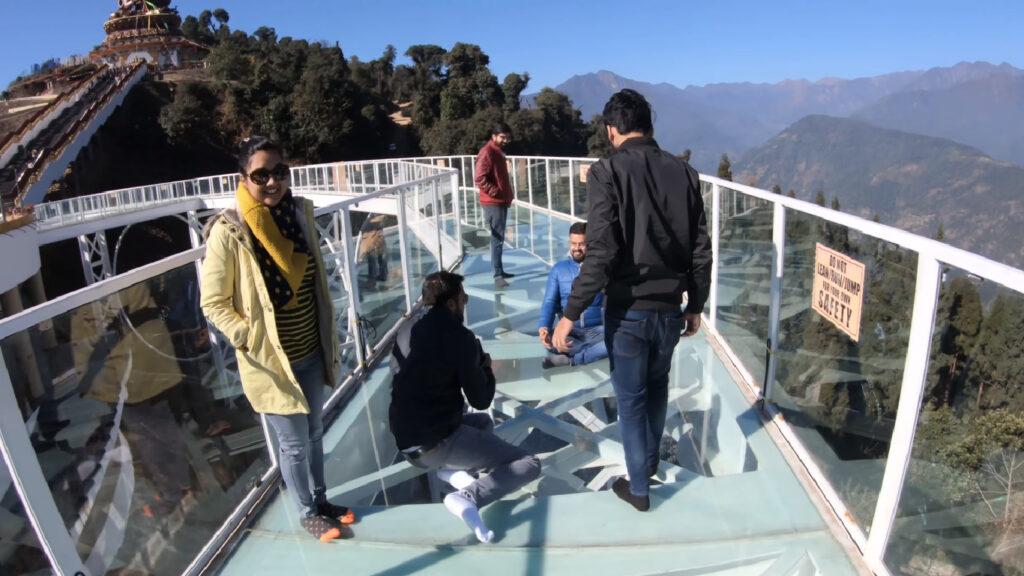About Taj Mahal

The Taj Mahal is one of the most famous and beautiful buildings in the world. It is a mausoleum built by the Mughal emperor Shah Jahan in memory of his wife Mumtaz Mahal, who died in 1631. The Taj Mahal is located in Agra, India, and is considered as a masterpiece of Mughal architecture. It is also a UNESCO World Heritage Site and one of the Seven Wonders of the World. The Taj Mahal is a symbol of love, art, and history that attracts millions of visitors every year.
Plan your trip to the Taj Mahal by providing you with some essential information about its architecture, history, timings, closing day, and ticket.
Architecture of the Taj Mahal
- The Taj Mahal is a masterpiece of Mughal architecture, which combines elements of Islamic, Persian, Turkish, and Indian styles. The main gateway is a huge archway that leads to the garden. It is decorated with calligraphy, floral patterns, and geometric designs.
- The garden is a rectangular area divided into four quarters by water channels and fountains. It represents the Islamic concept of paradise. The mosque and the guest house are identical buildings on the east and west sides of the garden. They are used for prayer and accommodation respectively.
- The mausoleum is the central and most prominent structure of the complex. It is a white marble building with a dome and four minarets at its corners. It houses the tombs of Shah Jahan and Mumtaz Mahal, as well as other members of their families. The mausoleum is adorned with intricate carvings, inlay work, and paintings.
- The architecture of the Taj Mahal is a marvel of symmetry, balance, and harmony. The Taj Mahal appears to gradually alter its color in the changing light of the day. It’s well worth the effort to get up early and spend sunrise there, as it majestically reveals itself. Visiting around dawn will also enable you to beat the huge crowds that start arriving later in the morning.
History of the Taj Mahal
The history of the Taj Mahal is a story of love, grief, and glory. It began in 1607, when Shah Jahan, then a young prince, met Mumtaz Mahal, a Persian princess, and fell in love with her. They got married in 1612 and became inseparable companions. Mumtaz Mahal was Shah Jahan’s favorite wife and his trusted advisor. She accompanied him on his military campaigns and gave birth to 14 children. In 1631, she died while giving birth to their last child in Burhanpur. Shah Jahan was devastated by her death and decided to build a magnificent monument in her memory.
He commissioned the best architects, craftsmen, and artists from India and abroad to work on his project. He also shifted his capital from Agra to Delhi to oversee the construction.
The Taj Mahal became a symbol of Shah Jahan’s love for Mumtaz Mahal and his power as an emperor.
Timings of the Taj Mahal
The timings of the Taj Mahal are from 30 minutes before sunrise to 30 minutes before sunset during normal operating days. The Taj Mahal is closed on Fridays for general viewing, but it is open for Muslims who want to pray at the mosque inside the complex. The Taj Mahal is also open for night viewing on five nights every month: two days before and after the full moon night, and on the full moon night itself. Night viewing tickets are limited and have to be booked one day in advance.
Best Time to Visit Taj Mahal
The best time to visit the Taj Mahal depends on your preference and convenience. Some factors that you may want to consider are:
- Weather: The weather in Agra can be very hot and humid in summer (April to June) and very cold and foggy in winter (December to February). The best time to visit in terms of weather is during spring (March to May) or autumn (September to November), when the temperature is moderate and comfortable.
- Crowds: The Taj Mahal attracts a lot of visitors throughout the year, but especially during weekends, holidays, and festivals. If you want to avoid crowds, you may want to visit on weekdays, early mornings, or late evenings.
- Events: There are some events that may enhance or hinder your experience of visiting the Taj Mahal. For example, during the full moon nights, you can witness the Taj Mahal glowing in the moonlight, which is a magical sight. However, you need to book your tickets in advance and pay a higher fee for this special occasion. On the other hand, during some religious festivals, such as Eid or Holi, the Taj Mahal may be closed or partially restricted for visitors.
Closing Day of the Taj Mahal
The closing day of the Taj Mahal is Friday for general viewing. It is open to Muslims who want to pray at the mosque inside the complex. The Taj Mahal is also closed on some national holidays, such as Republic Day (January 26), Independence Day (August 15), and Gandhi Jayanti (October 2).
Ticket for the Taj Mahal
The ticket for the Taj Mahal varies depending on your nationality and whether you want to visit the main mausoleum or not. The main mausoleum is the central chamber where the tombs of Shah Jahan and Mumtaz Mahal are located. It is optional to visit this chamber, but it requires an additional fee. Here are the current ticket prices for the Taj Mahal:
- Foreign tourists: 1100 rupees + 200 rupees for the main mausoleum (optional)
- Citizens of SAARC and BIMSTEC countries: 540 rupees + 200 rupees for the main mausoleum (optional)
- Domestic/Indian/OCI cardholder: 50 rupees + 200 rupees for the main mausoleum (optional)
Note that there is no entry fee for children below the age of 15 (both domestic and foreign). You can also get a discount of 5 rupees for Indian tickets and 50 rupees for foreign tickets if you buy them online.
There are two ways to get tickets for the Taj Mahal: online or offline. Online tickets can be bought through the official website of the Archaeological Survey of India or, which offer information and ticketing service for the Taj Mahal and other monuments. Online tickets have a validity of three hours from their time slot. Offline tickets can be bought from the ticket counters at the western gate, eastern gate, or southern gate of the Taj Mahal complex. Offline tickets have a validity of one day from their date of purchase.
The Taj Mahal is a monument that will take your breath away with its beauty and grace. It is a place that will touch your heart and soul with its history and significance. It is a destination that will enrich your knowledge and appreciation of India’s culture and heritage. If you are planning to visit India, you should not miss the opportunity to see the Taj Mahal for yourself. It will be an unforgettable experience that will make your trip worthwhile.










